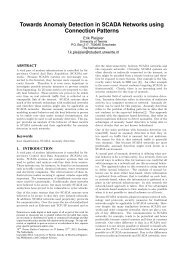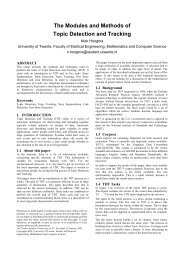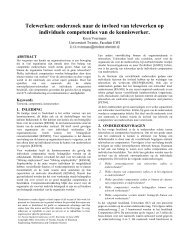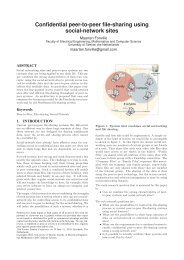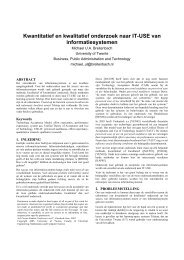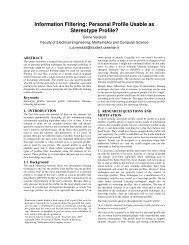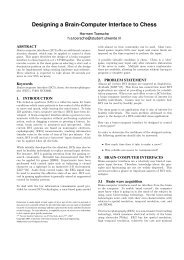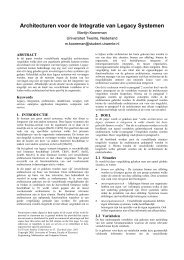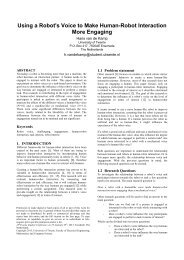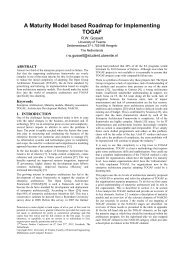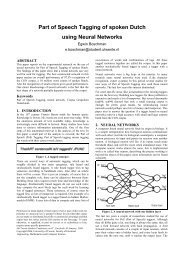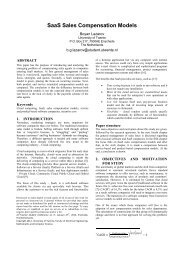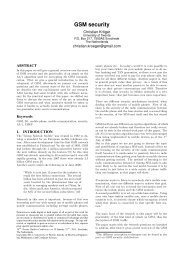Proceedings Template - WORD - Twente Student Conference on IT
Proceedings Template - WORD - Twente Student Conference on IT
Proceedings Template - WORD - Twente Student Conference on IT
Create successful ePaper yourself
Turn your PDF publications into a flip-book with our unique Google optimized e-Paper software.
effect also occurs for alternating mode, as seen in Figures 10<br />
and 11, but at a much larger value of n. This means the<br />
saturati<strong>on</strong> point of the channel is shifted. The c<strong>on</strong>tinuous<br />
scenario uses the available channel resources more efficiently<br />
and therefore c<strong>on</strong>gesti<strong>on</strong> occurs later.<br />
Figure 11. Freshness: the average beac<strong>on</strong> end-to-end delay<br />
for queue size=5<br />
In Figures 12 and 13 the total delay for c<strong>on</strong>tinuous and<br />
alternating mode is shown with a varied number of nodes and<br />
queue lengths respectively. Again, it can clearly be seen that the<br />
queue length of the nodes has little influence <strong>on</strong> the delay.<br />
Figure 8. Recepti<strong>on</strong> Probability for c<strong>on</strong>tinuous scenario<br />
with NPD, varied queue size and number of nodes.<br />
Figure 12. Freshness: average beac<strong>on</strong> end to end delay for<br />
c<strong>on</strong>tinuous scenario with NPD, varied queue size and<br />
number of nodes<br />
Figure 9. Recepti<strong>on</strong> Probability for alternating scenario with<br />
NPD, varied queue size and number of nodes<br />
Figure 10. Freshness: the average beac<strong>on</strong> end-to-end delay<br />
for queue size=1<br />
Figure 13. Freshness: average beac<strong>on</strong> end to end delay for<br />
alternating scenario with NPD, varied queue size and<br />
number of nodes<br />
From the simulati<strong>on</strong> experiments can be c<strong>on</strong>cluded that in<br />
general the c<strong>on</strong>tinuous scenario performs better than the<br />
alternating scenario. However, for a large number of nodes the<br />
freshness of the beac<strong>on</strong>s is better in the alternating scenario.<br />
4. MINIMIZING IEEE 1609.4 CHANNEL<br />
SW<strong>IT</strong>CHING IMPACT<br />
As clearly visible in the simulati<strong>on</strong> experiment results, using the<br />
channel switching specified in IEEE 1609.4 has a negative<br />
impact <strong>on</strong> the IEEE 802.11p beac<strong>on</strong>ing performance. The<br />
recepti<strong>on</strong> probability decreases and the average end-to-end<br />
delay increases. When comparing the alternating scenario to the



